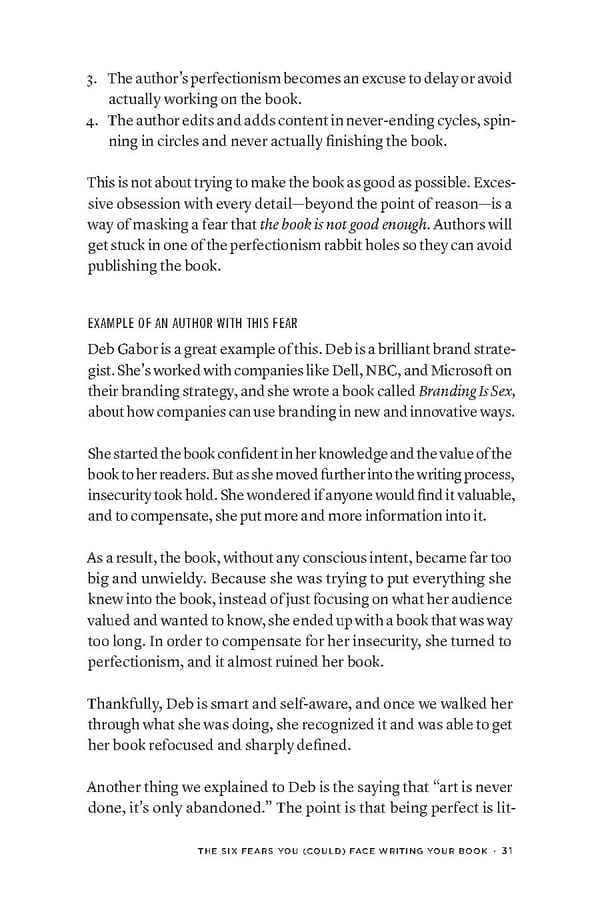3. The author’s perfectionism becomes an excuse to delay or avoid actually working on the book. 4. The author edits and adds content in never-ending cycles, spin- ning in circles and never actually finishing the book. This is not about trying to make the book as good as possible. Exces- sive obsession with every detail—beyond the point of reason—is a way of masking a fear that the book is not good enough. Authors will get stuck in one of the perfectionism rabbit holes so they can avoid publishing the book. EXAMPLE OF AN AUTHOR WITH THIS FEAR Deb Gabor is a great example of this. Deb is a brilliant brand strate- gist. She’s worked with companies like Dell, NBC, and Microsoft on their branding strategy, and she wrote a book called Branding Is Sex, about how companies can use branding in new and innovative ways. She started the book confident in her knowledge and the value of the book to her readers. But as she moved further into the writing process, insecurity took hold. She wondered if anyone would find it valuable, and to compensate, she put more and more information into it. As a result, the book, without any conscious intent, became far too big and unwieldy. Because she was trying to put everything she knew into the book, instead of just focusing on what her audience valued and wanted to know, she ended up with a book that was way too long. In order to compensate for her insecurity, she turned to perfectionism, and it almost ruined her book. Thankfully, Deb is smart and self-aware, and once we walked her through what she was doing, she recognized it and was able to get her book refocused and sharply defined. Another thing we explained to Deb is the saying that “art is never done, it’s only abandoned.” The point is that being perfect is lit- ThE Six fEArS yOU (COUlD) fACE WriTiNg yOUr BOOk · 31
 The Scribe Method by Tucker Max Page 30 Page 32
The Scribe Method by Tucker Max Page 30 Page 32